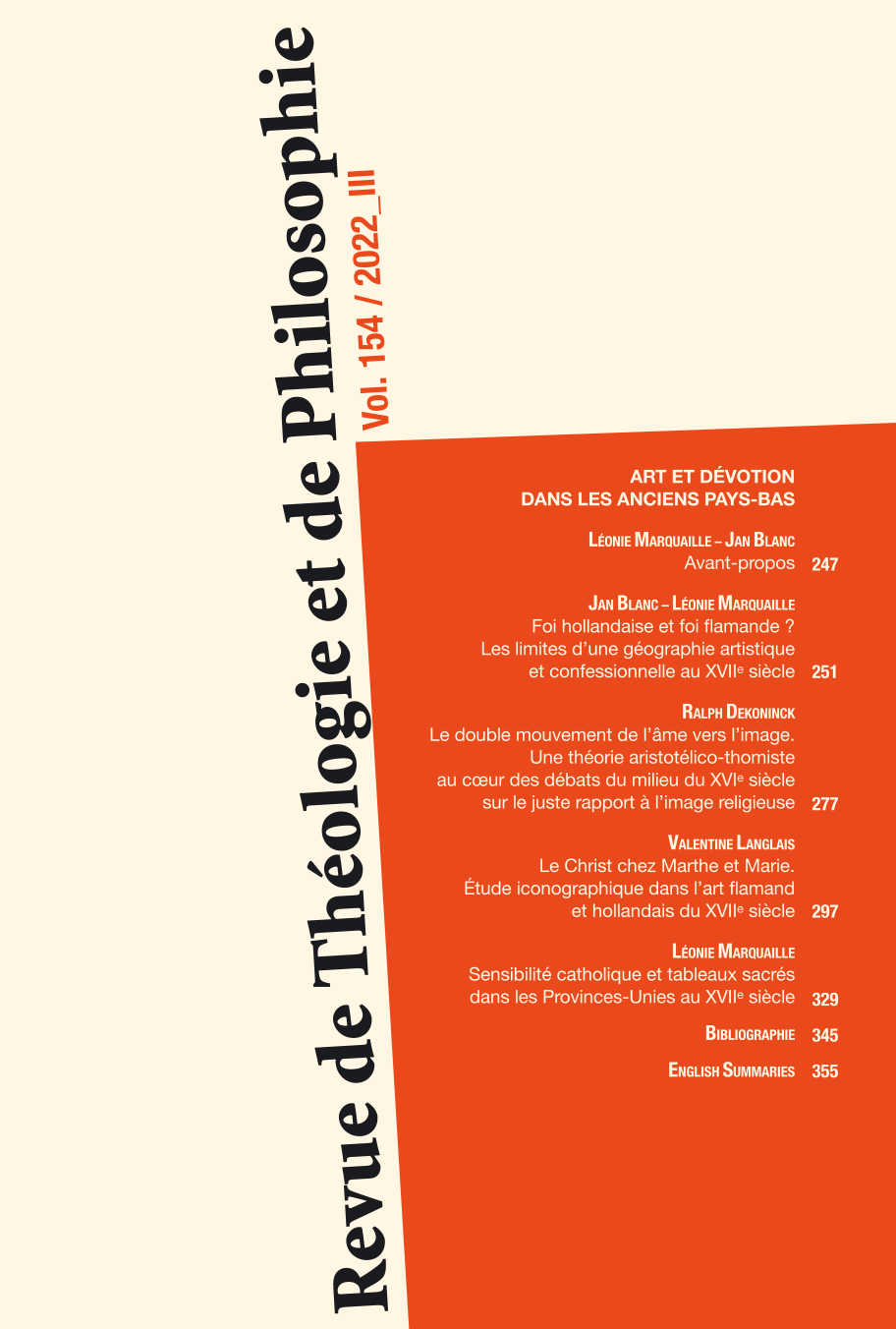Christ at Martha and Mary’s
Iconographic Study in Flemish and Dutch Art in the 17th c.
Abstract
Works depicting the story of Christ in the home of Martha and Mary, an episode taken from Luke’s gospel, proliferated in Dutch art from the mid-16th c. onwards under the impetus of the theological conflict between Catholics and Reformed believers over justification and salvation. From the end of the 16th c. and during the 17th c., two iconographic approaches were distinguished from one another. One tended to reflect a Protestant interpretation of the episode, depicting Mary as a pious Reformed reader, and Martha as a guardian of Dutch domestic virtues. The other, on the contrary, aims to defend the doctrinal positions of the Roman Church through the two sisters. Mary, in the guise of Mary Magdalene, becomes the symbol of the contemplative life, while Martha recalls the place of charity and works within salvation. In both cases, the works underline the complementary nature of the two sisters in their acceptance of Christ.
How to Cite
More Citation Formats

